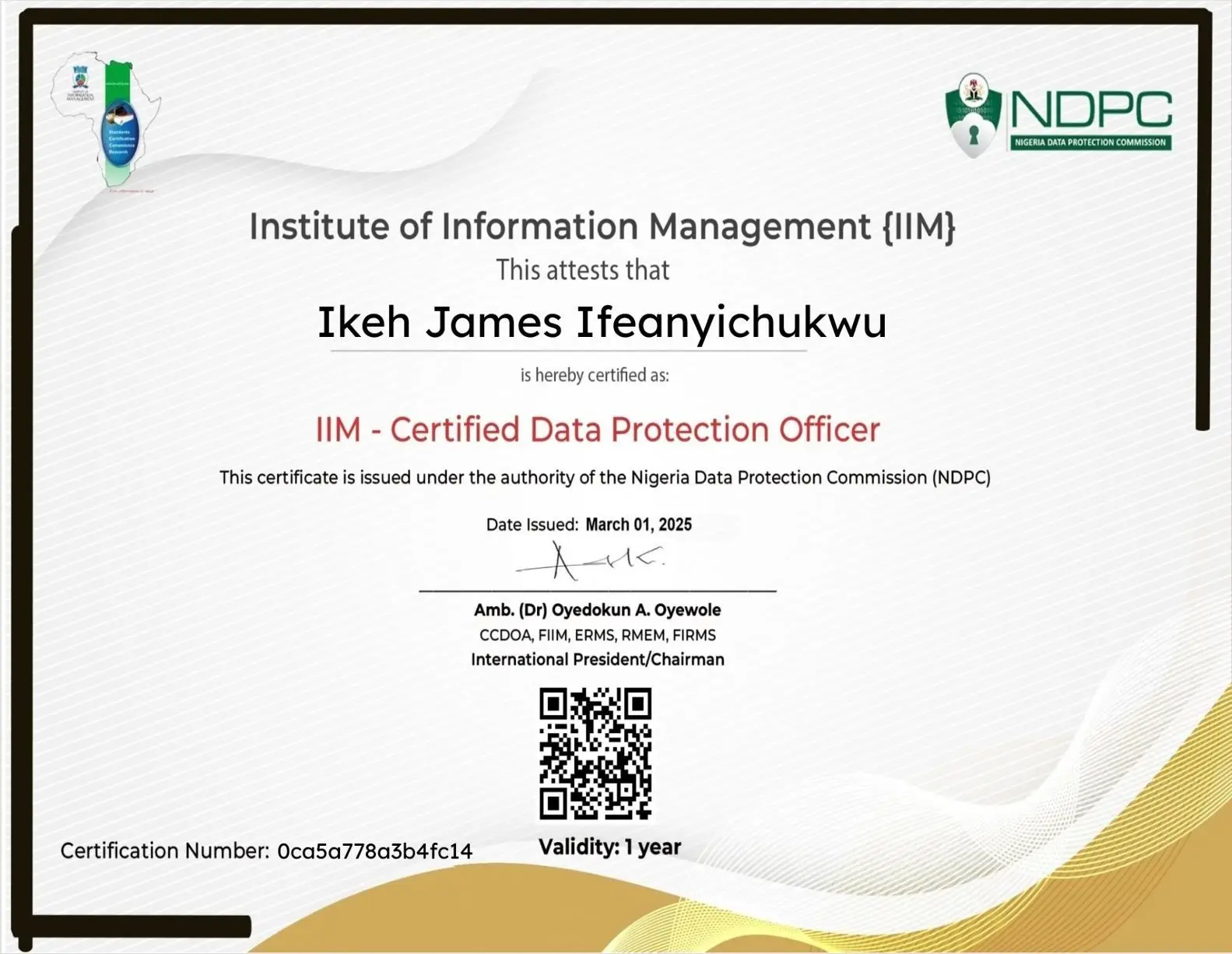Data Profiling and Automated Decision-Making: Privacy Risks You Should Know
Share

Every time you browse the web, apply for a loan, or shop online, algorithms are quietly making decisions about you. These systems analyze your data to predict your preferences, behavior, and even your creditworthiness. This process — known as data profiling and automated decision-making (ADM) — powers much of today’s digital economy.
But behind the convenience lies a serious question: How much control do you really have over what these systems know and decide about you?
In this article, we’ll explore what data profiling and automated decision-making mean, their benefits, and the privacy risks they pose. You’ll also learn how global laws like the GDPR and Nigeria Data Protection Act (NDPA 2023) protect you against unfair or intrusive profiling.
What Is Data Profiling?
Data profiling is the automated processing of personal data to evaluate or predict certain aspects of an individual’s behavior, characteristics, or preferences.
It involves analyzing patterns in data — such as browsing history, purchase records, or social media activity — to make predictions about a person’s:
- Interests and lifestyle
- Financial reliability
- Work performance
- Health risks
- Online behavior
Real-World Example
A bank uses profiling to assess whether a loan applicant is likely to repay a loan. By analyzing income history, spending habits, and even location data, the bank can assign a credit score and decide whether to approve or reject the loan.
While this may improve efficiency, it can also lead to bias, discrimination, or inaccurate conclusions — especially if the underlying data or algorithm is flawed.
What Is Automated Decision-Making (ADM)?
Automated Decision-Making occurs when decisions about individuals are made solely by automated systems — without any human involvement.
Examples include:
- Job application systems that automatically reject candidates based on keywords.
- E-commerce platforms that adjust prices dynamically based on a user’s browsing behavior.
- Banks that automatically approve or deny credit applications using algorithms.
In other words, the “decision” is made by a machine, not a person.
How Profiling and ADM Work Together
Data profiling feeds automated decision-making systems with insights. The process often follows these steps:
| Step | Process | Example |
|---|---|---|
| 1. Data Collection | Gathering user data from online interactions, transactions, and sensors. | Website cookies, social media activity. |
| 2. Data Analysis | Algorithms analyze patterns and correlations. | Predicting a user’s shopping preferences. |
| 3. Decision Output | Automated systems make or influence decisions. | Recommending credit limits or personalized ads. |
While these systems can enhance personalization and efficiency, they also carry privacy, fairness, and transparency risks.
The Privacy Risks You Should Know
1. Loss of Transparency
Many individuals don’t realize when or how they are being profiled. Algorithms operate in a “black box,” making it difficult to understand or challenge outcomes.
2. Bias and Discrimination
Automated systems can replicate or amplify existing social biases. For example, AI-driven recruitment tools have been found to favor certain genders or ethnicities based on biased training data.
3. Inaccurate or Incomplete Data
If an algorithm processes outdated or incorrect data, the resulting decisions can be unfair — such as misjudging credit risk or denying job opportunities.
4. Lack of Human Oversight
When decisions are fully automated, there’s often no human appeal mechanism, leading to accountability gaps.
5. Excessive Data Collection
Profiling often requires vast amounts of data — from browsing habits to geolocation — raising significant concerns about consent and data minimization.
Legal Protections: GDPR and NDPA
Both the EU’s General Data Protection Regulation (GDPR) and Nigeria’s Data Protection Act (NDPA 2023) recognize the privacy risks of profiling and ADM.
| Legal Framework | Key Provisions | Individual Rights |
|---|---|---|
| GDPR (Article 22) | Prohibits fully automated decisions that significantly affect individuals unless certain conditions are met. | Right to human intervention, to express a view, and to contest the decision. |
| NDPA (Section 30) | Restricts profiling or automated decisions that have significant effects without explicit consent or legal authorization. | Right to know when profiling occurs, and to request human review. |
Key Safeguards
- Explicit Consent: Individuals must consent to profiling that could have legal or significant effects.
- Transparency: Data subjects must be informed about how their data will be used and the logic behind decisions.
- Human Oversight: Organizations must allow for human review of automated decisions.
Practical Example: Credit Scoring Systems
Credit scoring illustrates both the benefits and dangers of profiling:
| Benefit | Risk |
|---|---|
| Faster loan approvals through automation. | Discrimination if algorithms use biased data (e.g., zip codes or gender). |
| Objective evaluation based on data. | Lack of appeal if decision-making is opaque. |
| Cost reduction for banks. | Privacy intrusion through unnecessary data collection. |
A fair system ensures transparency, explains decisions clearly, and allows for human intervention when needed.
How Organizations Can Reduce Risks
- Conduct Data Protection Impact Assessments (DPIAs):
Before deploying profiling or ADM systems, assess risks to individuals’ rights and freedoms. - Ensure Algorithmic Transparency:
Clearly explain how automated systems work and what data they use. - Enable Human Oversight:
Allow human intervention in all significant decisions. - Minimize Data Collection:
Collect only the data necessary for the specific profiling purpose. - Regularly Audit Algorithms:
Check for bias, fairness, and accuracy in decision-making systems.
FAQs
Q1. What’s the difference between profiling and automated decision-making?
Profiling involves analyzing data to predict behavior, while automated decision-making uses those predictions to take action without human input.
Q2. Can I refuse automated profiling?
Yes. Under GDPR and NDPA, you have the right to object to profiling and request human review of automated decisions.
Q3. Is all profiling harmful?
Not necessarily. Some profiling, like personalized recommendations, is harmless if done transparently and with consent.
Q4. Can companies profile me without my consent?
Only in limited cases — for example, if necessary for a contract or authorized by law. Otherwise, explicit consent is required.
Q5. What should organizations do to stay compliant?
Be transparent, get consent, assess risks, and include human oversight in all high-impact decisions.
Conclusion
Data profiling and automated decision-making are transforming industries, from finance to healthcare. But their growing influence also raises serious ethical and legal challenges.
Organizations must strike a balance between innovation and individual rights, ensuring that automated systems are fair, transparent, and accountable.
For individuals, awareness is the first line of defense. Knowing when and how you’re being profiled — and exercising your rights under laws like the GDPR and NDPA — empowers you to take back control of your data in an automated world.




































Leave a Reply